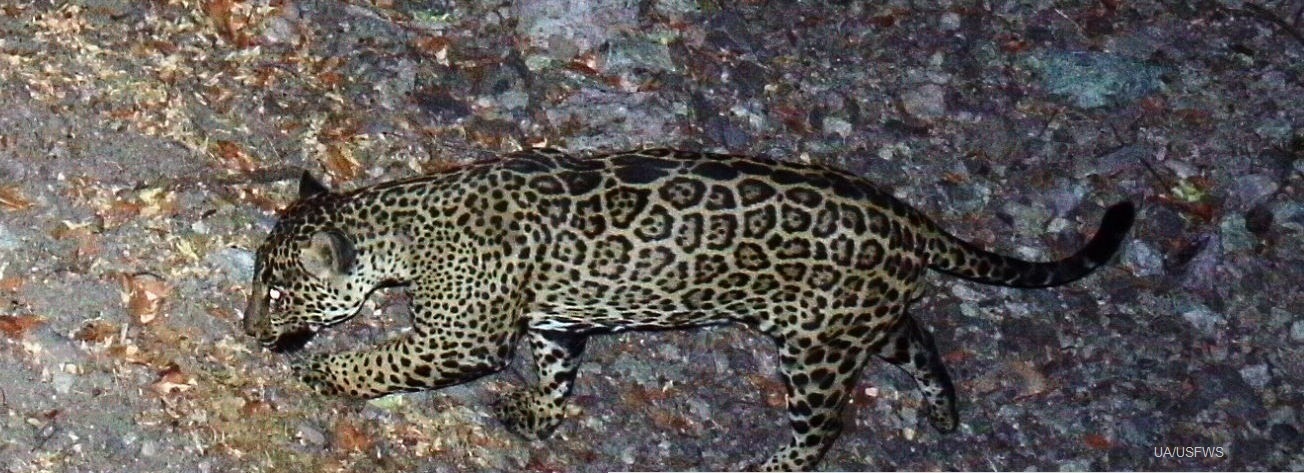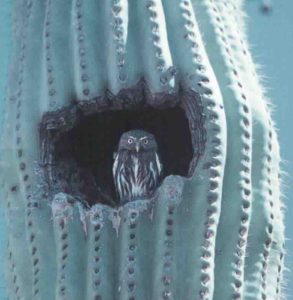We have much more to do and your continued support is needed now more than ever.
Border Wall: Erecting New Barriers to Recovering America’s Wildlife

No matter what you think about President Trump’s immigration policies, his proposed wall along the Mexican border is bad news for America’s already beleaguered wildlife. From ocelots and javelina in Texas to jaguar, pronghorn, and pygmy owls in Arizona, the nearly 2000-mile wall would pose unprecedented challenges to wildlife along our biologically rich southern border.
Healthy wildlife populations depend on their ability to move freely across the landscape and have access to suitable habitat for food, shelter, mating, and raising their young. Over the past few decades there has been tremendous scientific progress in understanding the movement patterns of wild animals, and the importance of well-connected landscapes for sustaining wildlife populations. Indeed, fragmentation of habitats and barriers to the movement of wildlife are major contributors to the alarming declines seen in many U.S. species.
Barriers, like border walls and highways, can interfere with the ability of animals to meet their daily needs, make seasonal migrations, or disperse to new areas. Obstacles to movement also inhibit the exchange of genes across and among wildlife populations, which can result in inbreeding, declines in vigor, and eventually the extinction of local populations or even demise of entire species. In addition, the capacity of many of our wildlife species to survive in the face of warming temperatures and other climatic changes will hinge on their ability to migrate unimpeded—often northward or to higher, cooler elevations—to track shifts in climate.
TAKE ACTION: Tweet now about the border wall and wildlife conservation!
To assure safe passage for wildlife, enhancing “landscape connectivity” has become one of the most important conservation strategies being pursued by wildlife managers and conservationists across the country, including the National Wildlife Federation.
Given the robust science demonstrating the link between healthy wildlife populations and their freedom to roam, President Trump’s call for a barrier walling off the entire 1,989-mile southern border is cause for grave concern. We have a glimpse at what its impacts would be from portions of the border that already have had fences and other barricades erected, often with legal exemptions from environmental laws and safeguards.
Walls, Fences and Fragmented Habitat
In the biologically rich Rio Grande Valley of Texas, for instance, border fences have fragmented the habitat of the 50 or so ocelots remaining in the United States. These rare cats are now isolated from their more genetically diverse relatives over the border in northern Mexico and facing an increasingly uncertain and risky future. Other wildlife in the region impacted by the barrier include bobcat, deer, javelina and a host of smaller creatures, such as the rare Texas tortoise and indigo snake. The barrier affects as much as 75 percent of the valley’s national wildlife refuge complex, and threatens to undermine more than $150 million of habitat protection and restoration carried out over decades by the U.S. Fish and Wildlife Service and many private conservation organizations.

Building a wall along the entire border would dramatically escalate these types of wildlife impacts. In a 2016 analysis the U.S. Fish and Wildlife Service found that the wall could potentially impact 111 threatened or endangered species from Texas to California. Many other species would be affected as well, especially those with small population sizes, which would be put at increased risk of extinction. Jaguar, desert bighorn, and Sonoran pronghorn are just a few of the wildlife species researchers have determined would suffer from construction of the wall. Even wings don’t necessarily exempt animals from being affected. Researchers examining the potential impact of border barriers in Arizona found that low-flying Ferruginous Pygmy-Owls were also significantly constrained by existing border barriers.
The proposed wall also threatens to undermine the ecological integrity of some crown jewels in the nation’s public conservation estate, such as Big Bend National Park. Apart from disrupting and blocking wildlife movement and migration, such a massive construction project would cause irreparable damage to the wild character of remote and isolated portions of Big Bend. The wall also would cut across four national wildlife refuges, including Cabeza Prieta in Arizona, and be a setback for collaborative private conservation efforts such as the rancher-led Malpais Borderlands effort in New Mexico.
Border security is an important issue that requires a serious and well-conceived response. Unfortunately, despite the massive wildlife impacts President Trump’s wall would impose on America’s wildlife, many security experts question its effectiveness for stemming illegal immigration, quite apart from issues related to its astronomical cost, construction feasibility, and social/cultural impacts. Reducing illegal border crossings requires multiple approaches, including physical barriers, enhanced surveillance, enforcement, and cross-border collaboration. A one-size fits all wall, though, is entirely inappropriate in many ecologically sensitive areas based on both security and wildlife considerations. The bottom line is that the proposed border wall, is very bad news for America’s already struggling wildlife!
As border policies are pursued, wildlife conservation must be a key part of the calculus. Rather than sacrificing the nation’s wildlife for the sake of a costly and likely ineffective campaign promise, we call on the President to embrace the conservation values of fellow Republican Teddy Roosevelt and work to protect and restore America’s wildlife heritage. America’s sportsmen and wildlife advocates will be watching.






















